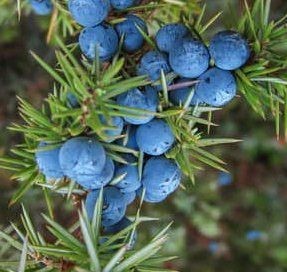Foetid juniper
(Juniperus foetidissima)

Description
Juniperus foetidissima, with common names foetid juniper or stinking juniper, is a juniper tree species in the family Cupressaceae. The tree is native to southeastern Europe and Western Asia, from southern Albania and northern Greece, southern North Macedonia, across Turkey to Syria and the Lebanon, the Caucasus mountains, the Alborz mountains of northern Iran, and east to southwestern Turkmenistan. There is also an isolated population in the Crimea. A number of notably large specimens are specially protected in Turkey; the largest is the Aslanardıçı, 25 m tall and 3.38 m trunk diameter, estimated to be 1,700 years old (Boscawen 1994). Juniperus foetidissima is a medium-sized tree reaching 6–25 metres (20–82 ft) tall, with a trunk up to 2.5 metres (8.2 ft) diameter. It has a broadly conical to rounded or irregular crown. The leaves are of two forms, juvenile needle-like leaves 8–10 mm long on seedlings and re-growth after branch damage, and adult scale-leaves 2–3 mm long on older plants. It is largely dioecious with separate male and female plants, but some individual plants are monoecious, producing both sexes. The cones are berry-like, 7–13 mm in diameter, blue-black with a whitish waxy bloom, and contain 1–2 (rarely 3) seeds; they are mature in about 18 months. The male cones are 2–3.5 mm long, and shed their pollen in early spring. It often occurs together with Juniperus excelsa, being distinguished from it by its thicker shoots 1.2–2 mm diameter (0.7–1.3 mm diameter in J. excelsa), and green, rather than grey-green, leaves. The crushed foliage has a strong foetid smell, from which the species gets its name. Junipers are coniferous trees and shrubs in the genus Juniperus of the cypress family Cupressaceae. Depending on taxonomic viewpoint, between 50 and 67 species of junipers are widely distributed throughout the Northern Hemisphere, from the Arctic, south to tropical Africa, throughout parts of western, central and southern Asia, east to eastern Tibet in the Old World, and in the mountains of Central America. The highest-known juniper forest occurs at an altitude of 4,900 metres (16,100 ft) in southeastern Tibet and the northern Himalayas, creating one of the highest tree lines on earth. Junipers vary in size and shape from tall trees, 20–40 metres (66–131 ft) tall, to columnar or low-spreading shrubs with long, trailing branches. They are evergreen with needle-like and/or scale-like leaves. They can be either monoecious or dioecious.
Taxonomic tree:







